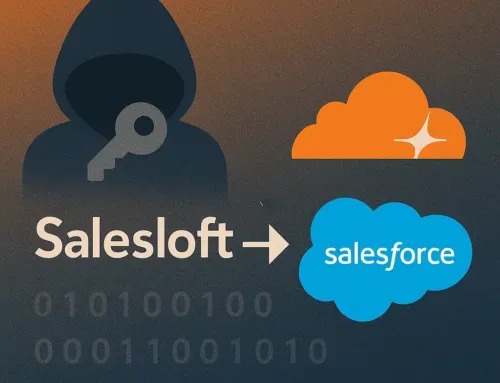
Approx. read time: 10.9 min.
Post: Fallacies: A Comprehensive Exploration of Deceptive and Defective Arguments
Types of Logical Fallacies: 25+ Common Errors Explained
Want a clear, practical guide to the types of logical fallacies that actually helps in real conversations, meetings, and online debates? This long-form walkthrough explains the most frequent errors in reasoning—with short examples and quick fixes you can use right away. You’ll also get a fast checklist (A-R-S), a debiasing routine, a short history, modern approaches, and FAQs.
🔎 What Is a Logical Fallacy (and Why It Matters)
A logical fallacy is a mistake in reasoning that makes an argument weaker than it looks. Some are innocent slips; others are persuasive tactics that push you toward a conclusion without strong support. Learning to spot them helps you:
• judge claims faster and more fairly
• avoid being misled online
• build stronger, clearer arguments of your own
🧭 Formal vs. Informal Fallacies (The Quick Split)
• Formal fallacies break the strict rules of logic. The conclusion doesn’t follow from the premises because the form is invalid (e.g., affirming the consequent).
• Informal fallacies can look tidy but rely on unclear language, missing context, weak evidence, or unfair dialogue tactics (e.g., straw man).
Use both lenses. Ask: “Is the form valid?” and “Even if the form is fine, does the content hold up?”
🪄 Ambiguity Traps
🧩 Equivocation
What it is: Using the same word with different meanings in one argument.
Example: “Light objects aren’t heavy. Knowledge is light. So knowledge isn’t heavy.”
Fix: Define key terms. If a term shifts meaning, split the claim and test each version.
✍️ Amphiboly
What it is: Ambiguity from grammar or punctuation.
Example: “Police told students to stop drinking after midnight.” (Who was drinking?)
Fix: Rewrite the statement so it has a single, clear meaning before you evaluate it.
🔊 Accent
What it is: Shifting meaning by emphasis, punctuation, or selective quoting.
Example: “We never said the app is slow.” (But did you say it crashes?)
Fix: Compare the emphasized claim with the full, plain reading.
🧱 Part–Whole Confusions
🧱 Composition
What it is: Assuming what’s true of parts is true of the whole.
Example: “Each module is small; the system must be small.”
Fix: Check for emergent properties. Scale and interaction can flip outcomes.
🪟 Division
What it is: Assuming what’s true of the whole is true of each part.
Example: “The company is profitable; every team must be profitable.”
Fix: Look for local variation. Aggregates can hide losses or exceptions.
🔁 Circular Moves & Hidden Assumptions
🔁 Begging the Question (Petitio Principii)
What it is: The conclusion is already assumed in the premise.
Example: “Unlimited speech is best because everyone should be free to say anything.”
Fix: Replace the circular premise with independent evidence or a fresh reason.
🎯 Complex (Loaded) Question
What it is: A question that smuggles in a claim you haven’t accepted.
Example: “Are you still ignoring security best practices?”
Fix: Challenge the frame: “Before I answer, what makes you think we were ignoring them?”
⏱️ Cause & Effect Errors
⏱️ Post Hoc (False Cause)
What it is: Assuming B happened because it came after A.
Example: “We redesigned in May; sales rose in June. The redesign caused it.”
Fix: Hunt for other drivers (seasonality, ads, pricing). Test causation with experiments or controls.
🔄 Confusing Cause & Effect
What it is: Reversing direction.
Example: “Happy teams ship more” vs. “Teams are happy because they ship more.”
Fix: Check time order and mechanism. Could both be effects of a third factor?
🧲 Common Cause
What it is: A third factor explains both A and B.
Example: “Coffee causes productivity” (both may rise because a deadline is near).
Fix: Identify shared drivers before claiming a direct cause.
🥊 Off-Target Rebuttals
🥸 Straw Man
What it is: Misrepresenting your opponent’s claim so it’s easier to attack.
Example: “They want stricter testing,” becomes “They want to shut down innovation.”
Fix: Steel-man instead: restate their strongest version, then respond.
🪃 Irrelevant Conclusion (Ignoratio Elenchi)
What it is: “Refuting” a claim by proving something else.
Example: Proving a city isn’t the biggest doesn’t refute “fastest-growing.”
Fix: Reconnect your evidence to the actual claim on the table.
👥 Appeals That Can Mislead
🎓 Appeal to Authority (Ad Verecundiam)
What it is: Treating a claim as true because an “expert” said it.
Good use: The expert is qualified in the exact field, speaking inside their expertise, and evidence is available.
Bad use: Celebrity endorsements, or cherry-picking one expert when the field is split.
Fix: Ask: Is the source qualified on this, and is there accessible evidence?
👥 Appeal to Popularity (Ad Populum)
What it is: “Everyone believes it, so it’s true.”
Fix: Popular doesn’t equal correct. Look for data, mechanisms, and tests.
⚠️ Appeal to Fear (Ad Baculum)
What it is: Using threats to make you accept a claim.
Fix: Separate practical decisions from beliefs. Evidence should carry beliefs.
💙 Appeal to Pity (Ad Misericordiam)
What it is: Asking for belief based on sympathy alone.
Fix: Compassion matters in actions, but belief needs evidence.
🙍 Ad Hominem (Abusive, Circumstantial, Tu Quoque)
What it is: Attacking the person, not the claim.
• Abusive: “Ignore her plan; she’s incompetent.”
• Circumstantial: “His study is wrong; he works in the industry.”
• Tu quoque: “You don’t do it either—so your advice is bad.”
Fix: Judge claims by reasons and evidence. Note conflicts, but test the argument itself.
🕳️ Appeal to Ignorance (Ad Ignorantiam)
What it is: “No one has disproved it, so it’s true.” (Or: “No one proved it, so it’s false.”)
Fix: Absence of evidence is not evidence of truth (or falsity) unless we would expect to see evidence by now.
🧪 Faulty Evidence
🌪️ Hasty Generalization
What it is: Jumping from a small sample to a broad rule.
Fix: Increase sample size, diversity, and controls. Look for counter-examples.
🧯 Faulty Analogy
What it is: Treating two things as similar when the key differences matter.
Example: “Kids use new toys; countries with new weapons will use them.”
Fix: Test similarity on the factors that drive the outcome, not surface traits.
🛷 Slippery Slope (When It’s Bad… and When It Isn’t)
Bad slope: A chain of weak steps from a small start to a dramatic end without support.
Better slope: Each step has evidence (mechanism, incentives, historical pattern).
Fix: Demand links between steps. If one link fails, the slope fails.
📜 Classical Extras (Quick Definitions)
🎯 Accident / Converse Accident
• Accident: Misapplying a general rule to an exception.
• Converse accident: Building a broad rule from an atypical case.
📏 Secundum Quid (Hasty Absolutizing)
Confusing a qualified claim with an absolute one. “In context X” becomes “In all contexts”.
🗃️ Category Error (Form of Expression)
Forcing a term into the wrong logical category (e.g., treating “flourishing” as an action rather than a quality).
📐 Formal Fallacies (Cheat-Sheet)
These are invalid by form, regardless of content:
• Affirming the consequent: If P then Q; Q; therefore P.
• Denying the antecedent: If P then Q; not-P; therefore not-Q.
• Undistributed middle: The linking term never applies to “all” of its class.
• Four terms: Sneaking in an extra distinct term.
• Illicit major/minor: Drawing a universal conclusion from a term that was never distributed.
🧰 The A-R-S Checklist: A Fast Test for Any Argument
• Acceptable: Are the premises credible to this audience? Are definitions and sources clear?
• Relevant: Do the reasons actually bear on the conclusion, or are we off-topic?
• Sufficient: Do we have enough good reasons, or just one weak point and lots of fluff?
If an argument fails one or more, pause. Ask for clearer terms, better evidence, or a tighter link to the claim.
🛡️ 7 Steps to Debias Your Reasoning
-
Name the claim. Write the exact statement being argued.
-
Map the reasons. Bullet the premises.
-
Underline the verbs and nouns. Catch shifting terms (equivocation).
-
Mark the jumps. Time, cause, and “therefore” leaps.
-
Swap sides. Steel-man the other view.
-
Try to break it. Find counter-examples or missing data.
-
Decide and document. Accept, reject, or park it pending more evidence.
🕰️ Historical Overview (Aristotle → Copi)
• Aristotle (Sophistical Refutations): Refutation as proving a contradiction of a thesis; the “appearance condition” (bad arguments can look good); early catalog split into language-dependent (equivocation, amphiboly, etc.) and language-independent (accident, non-cause, ignoratio elenchi, many questions).
• Francis Bacon: The “idols” (tribe, cave, marketplace, theatre) as biases that distort inquiry—precursors to today’s bias work.
• Arnauld & Nicole (Port-Royal Logic): Everyday sophisms and early inductive pitfalls (imperfect enumeration, hasty generalization).
• John Locke: The ad-arguments family (ad verecundiam, ad hominem, ad ignorantiam) as common but unreliable moves when used to settle truth.
• Isaac Watts: Added ad populum and popularized the “straw man” idea in practice.
• Jeremy Bentham: Political fallacies (authority, danger, delay, confusion) and how debate tactics derail reform.
• Richard Whately: Split fallacies into logical (formal) and material (non-logical), giving ad-arguments a home.
• J. S. Mill: Centered induction—fallacies of observation and generalization (post hoc, hasty generalization, weak analogy), plus a priori errors.
• Alfred Sidgwick: A practical sieve—test arguments for fallacy marks in everyday reasoning.
• Irving Copi: Standardized the modern textbook list (formal vs informal: relevance/ambiguity), cementing many labels we still use.
🚀 New Approaches Since the 1970s (What Modern Theory Adds)
• Hamblin’s reboot: Critiqued “list-and-definitions” textbooks; shifted focus to dialogue contexts and rules of orderly disputation.
• Diagnostics: Finocchiaro stressed classifying fallaciousness (how an argument fails) over mere naming; Massey flagged limits of proving invalidity for natural-language arguments by form alone.
• Informal logic (Johnson & Blair): A-R-S (Acceptable, Relevant, Sufficient) as practical criteria—already woven into this guide.
• Formal pluralism (Woods & Walton): Use the right logic for the job (inductive, relevance, defeasible) instead of forcing everything into one system.
• Epistemic accounts (Biro & Siegel): An argument should raise justification from premises to conclusion; failures (esp. question-begging) are epistemic faults.
• Bayesian takes (Hahn & Oaksford): Treat argument strength as probabilistic support; a “fallacy” often has low posterior support given the evidence.
• Dialectical/dialogical (Pragma-dialectics; Walton): Evaluate moves by rules of critical discussion and argumentation schemes + critical questions (e.g., when is an authority appeal okay?).
• Virtue argumentation: Link good/bad arguments to intellectual virtues/vices (open-mindedness vs dogmatism), explaining why certain fallacies recur.
🔭 Current Issues in Fallacy Theory
• What counts as a fallacy? One unified definition is elusive. Different lenses—logical, epistemic, dialectical, probabilistic—flag different faults.
• The appearance condition: Classic view says fallacies seem good; some modern theories drop this as “psychological,” others keep it to explain why smart people get fooled.
• Teaching: Should we teach named fallacies or positive criteria (A-R-S)? Best practice blends both: learn the names to spot patterns; use criteria to judge strength.
• Biases vs fallacies: Biases are causes (often unconscious) that lead to fallacies; fallacies are the mistakes in the arguments themselves. Handle both: debias mindsets and fix reasoning.
🔗 Sources & Further Reading
External:
• Stanford Encyclopedia of Philosophy — “Fallacies”: https://plato.stanford.edu/entries/fallacies/
• Internet Encyclopedia of Philosophy — “Informal Logic”: https://iep.utm.edu/inf-log/
Internal (update to your actual slugs as needed):
• Reasons Why Website Visitors Stop Reading Before the End of Your Page (/blog/reasons-why-website-visitors-stop-reading/)
• Built to Perform: Lessons from 40 Years of Real-World Leadership (/blog/built-to-perform-real-world-leadership/)
• Forum (/forums) • Downloads (/downloads)
❓ FAQs
• What’s the simplest way to define a logical fallacy?
A mistake in reasoning that makes an argument look stronger than it is.
• What’s the difference between formal and informal fallacies?
Formal fallacies break logical form. Informal fallacies lean on bad language, missing context, weak evidence, or unfair tactics.
• Is ad hominem always fallacious?
It’s fallacious when it attacks the person instead of the claim. Pointing out conflicts of interest can be relevant—but you still need to test the argument itself.
• How do I tell correlation from causation?
Check time order, mechanism, and controls. Look for third-factor explanations and, when possible, test with experiments.
• When is an appeal to authority valid?
When the source is qualified in the exact field, speaking within their expertise, and the evidence is accessible and consistent with the wider literature.
• How do I spot a straw man quickly?
Compare what someone says the other side believes to the other side’s actual words. If it’s weaker or exaggerated, it’s likely a straw man.
• Are slippery slopes always bad?
No. They’re reasonable if every step is supported by evidence. Most bad slopes hide weak or missing links.
• What’s a fast way to audit any argument?
Use A-R-S: Are the premises Acceptable, Relevant, and Sufficient?
• Do cognitive biases cause fallacies?
Biases (like confirmation bias) can lead to fallacies by distorting what evidence you notice and how you weigh it.
• What should I do when I can’t decide?
Park it. Note what evidence would change your mind and come back once you have it.
▶️ Every Manipulation Tactic in 16 Minutes (Video)
▶️ Every Logical Fallacy Explained in 11 Minutes
Related Videos:
Related Posts:
Learn about JavaScript IF STATEMENTS
Overcoming Failure 6 Bold Truths
A powerful 25 year Climate Strategy: Rain and Resilience
4 Powerful Morning Affirmations
Pride in Religion: Healthy vs Unhealthy
Life Is Your Playground—So Remember, You Only Live Once
Learn about JavaScript FUNCTIONS
Learn Multiple Function Arguments in Python
Reasons why website visitors stop reading before the end of your page
Why Python is the cooler programming language









